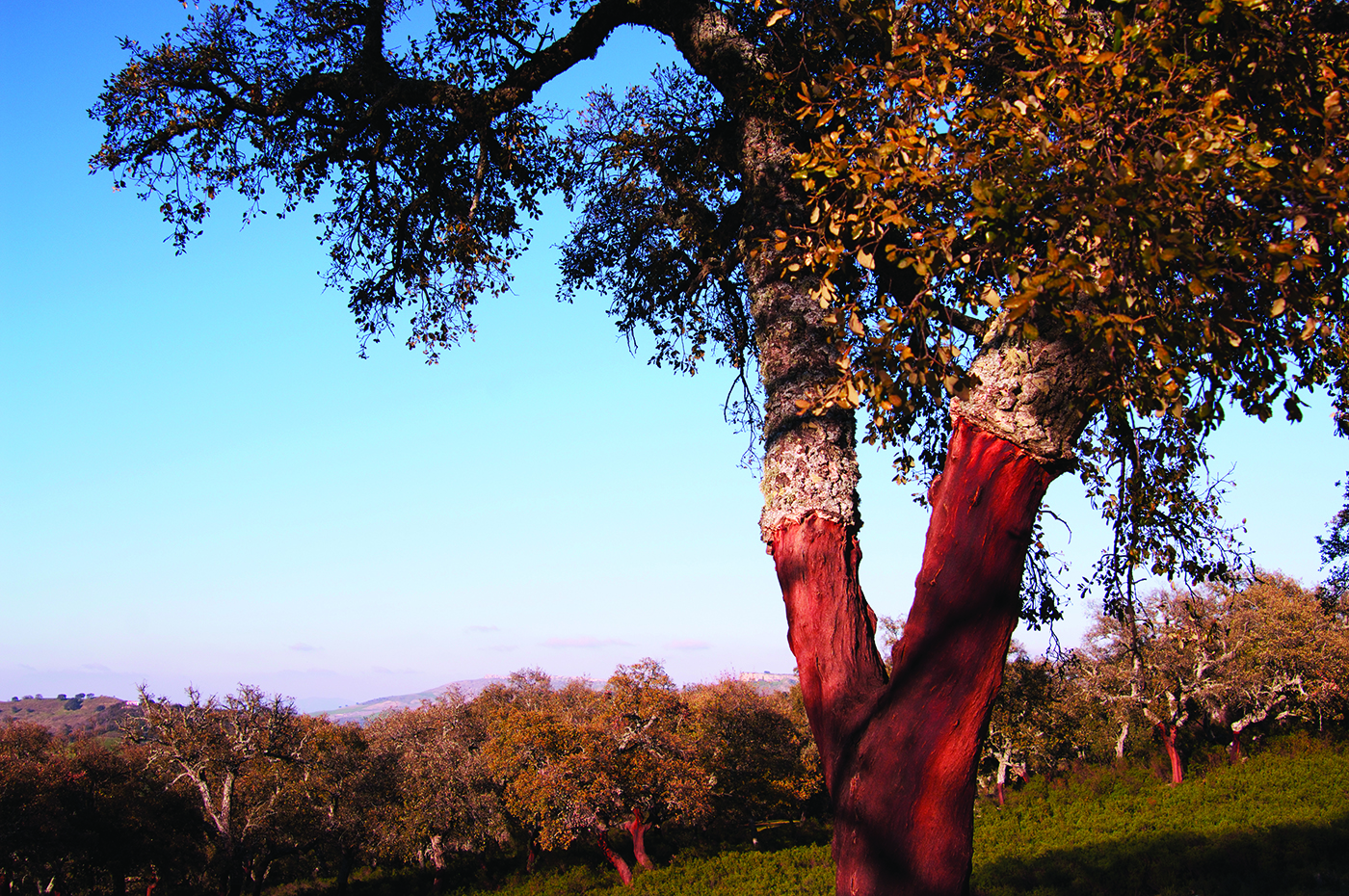Cork (obtained from cork oak) is a noble material that is used in many production activities. Most people are familiar with it because it is used extensively for bottling wines because it is a natural material that generates micro-oxygenation does not alter the reductive climate of the bottle, does not change the organoleptic properties of the wine and, thanks to its elasticity perfectly seals the bottle, preventing the beverage from leaking.
Actually, cork also has significant potential for use in the building industry as an insulation material due to its low thermal conductivity, acoustic properties and ability to absorb and dispose of moisture.
Cork is a sustainable, renewable and recyclable material whose life cycle begins when the bark is extracted.
The cork oak tree that gives life to a precious treasure
The cork oak is a type of tree that grows slowly and takes several years to develop. A slow and natural process that requires care and patience. The tree from which cork is obtained is a particular type of oak, from which, around 25 to 30 years of age, the first bark is extracted using a manual and artisanal process that has been handed down for generations and which is carried out to protect and maintain the plant in good health.
The cork that we use as an insulation component in ours is obtained by grinding the waste from the processing of corks, which amounts to about 70 per cent of the raw material processed.
Therefore, cork is the skin of the Cork Oak, a robust evergreen that grows in the sunnier Mediterranean. At least two-thirds of the world’s cork oaks grow in the Latin range of Western Europe, with the remaining third falling along the Maghreb belt of the African continent.
Cork grows and regenerates spontaneously at a rate of ten years when the tree is ready for a new decortication. It is characterised by overlapping layers of cellulose and wood, to which it also adds a waxy coating, suberin, which enhances certain properties that act as a value multiplier.
Cork is obtained by partially removing the bark of the oak tree. This is a sustainable process, which takes place without damaging the tree or the surrounding habitat. For extraction and use, no chemicals are used to process the bark, which Diasen refines to a usable grain size using its own customised grinding plant.
After the bark has been extracted, the tree continues its evolutionary trajectory by immediately regenerating new bark, according to a regenerative cycle that makes it possible to use a delicate, high-performance material while embracing a concept of a building that respects the environment and people.
Cork oak: from bark to home
The bark is sustainably removed from the tree, periodically, according to the rhythms of nature and the plant, which must regenerate itself to allow man to enjoy its most precious asset. As mentioned above, neither the tree nor its surroundings are affected by this procedure.
The bark is selected to ensure it is of high quality and suitable for use in the production of stoppers. The first step in the treatment is the removal of any impurities: this may include drying and sterilisation of the material, removal of bacterial flora and tannin and dust residues from the tree.
Finally, once the waste material from the processing of the caps is obtained, it is brought to functional granulometry for use in a premix that is often sprayed with a plastering machine and used as insulation for homes.
Cork, a valuable material for the green building of tomorrow
There is no more time: the climate crisis is having clear effects, and we cannot underestimate the impact of building emissions on the balance of our planet. It is time to act, to change approach and mentality. We must adopt new ways of building and enhancing the regenerative elements of nature.
For years, Diasen has been offering its customers solutions that improve the habitability of buildings, enhancing their comfort with a reduced environmental impact. Cork is our flagship material that we use to create a greener world.
Cork has a high thermal insulation capacity: it helps maintain a constant temperature inside the building, reducing the need for artificial heating or cooling. Costs on utility bills, as well as consumption and impact on the environment, are reduced, offering building users maximum comfort and savings.
Not only a thermal insulator: cork is an excellent acoustic and sound-absorbing insulator, capable of diminishing the effects of noise to achieve a relaxing and comfortable environment.
Cork is a resistant and durable material that does not deteriorate over time if it is treated properly from extraction to its use in the premix. It must be taken care of step by step, respecting the plant’s growth rhythms and avoiding introducing chemical processes into the treatment.
In short, cork is a material with a thousand virtues, sustainable and renewable, and it can be recycled at the end of its life cycle.

